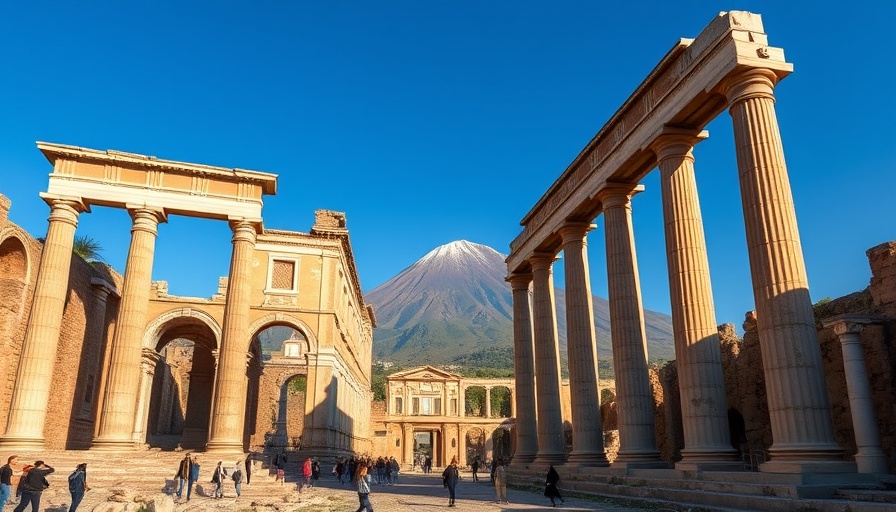
Explore the Timeless Wonders of Pompeii
Imagine walking through the narrow, sun-soaked streets of an ancient city, where every corner reveals vivid frescoes and echoes of a lost civilization. Pompeii, forever frozen in time by the eruption of Mount Vesuvius in 79 CE, offers a unique glimpse into Roman life. With its rich tapestry of history, art, and architecture, visiting Pompeii is not just a journey through ruins—it's an encounter with the essence of a bygone era.
Why Pompeii Should Be on Your Bucket List
Pompeii’s allure lies not only in its tragic history but also in its remarkable preservation. The volcanic ash that buried the city protected it from the ravages of time, keeping buildings and artifacts incredibly intact. As you stroll through the bustling Forum or admire the grandeur of the Amphitheater, it's easy to envision what life was like for its 20,000 inhabitants—a vibrant mix of commerce, culture, and community life.
The Top Five Must-See Attractions in Pompeii
When planning your visit, make sure to prioritize these standout sites that showcase the city’s history and artistry:
- The Forum: The heart of Pompeii, bustling with traders, politicians, and citizens engaging in daily life.
- The Villa of the Mysteries: Renowned for its stunning frescoes that delve into the mysteries of life and death.
- The Stabian Baths: A place where the Romans indulged in relaxation and socializing, renowned for their intricate heating systems.
- The Garden of the Fugitives: A poignant site that presents the plaster casts of those who were caught by the eruption, offering a poignant reminder of the past.
- The Amphitheater: One of the oldest surviving amphitheaters in the world; it held gladiatorial games and other public spectacles, attracting crowds from diverse backgrounds.
Uncover the Hidden Gems
Beyond the main attractions lies a whole world of lesser-known treasures. Venture to the House of the Faun—a sprawling residence filled with exquisite mosaics—and discover the House of Venus in the Shell, which features an enchanting fresco of the goddess herself. These hidden gems provide deeper insight into the daily lives and beliefs of Pompeii's inhabitants.
Plan Your Journey
A day is a good starting point, but if time allows, consider splitting your visit over two days to soak in all the historic richness. Prepare for sun and wear comfortable shoes as you navigate the ancient roads and explore the vast expanse of this UNESCO World Heritage site. If you can, join a guided tour to enrich your experience with expert insights.
Visiting Pompeii is a heartfelt adventure grounded in history that resonates with modern travel enthusiasts. Don’t miss the chance to connect with the past; plan your visit and become a part of this timeless narrative!
 Add Row
Add Row  Add
Add 




Write A Comment